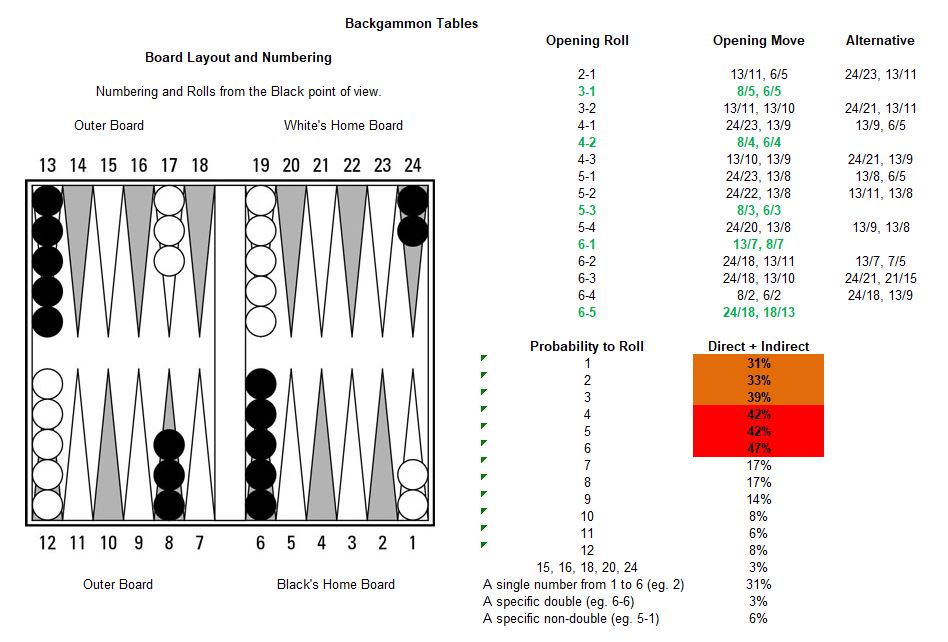Last updated on April 20, 2024
At Deluxe Backgammon we don’t claim to be world-class players, but we are always looking to improve our game. Following one of our regular evening sessions in January this year, we were sitting around delaying our inevitable departure into the bitter cold. We had the opportunity to sit back and listen to some of our more experienced players talking about the common mistakes that beginners make. They joked about the ‘smell of fear’ when they played with novices. We didn’t join the discussion, as we suspected some of their comments may have been directed at us, but we have tried to summarise the three key points in their conversation below:
Security
There is often an obsession with social players in playing safe. As a result, they are very reluctant to split and they tend to crawl around the board with a series of unconnected points. Eventually, they are passed and fall behind in the race unless the roll of the dice falls their way. These players need to study the opening moves and understand the basics of probability.
Splitting and slotting create opportunities to place builders in the outer board, which can be used to hit or secure points on subsequent rolls. Early in the game is the time to take risks as there is time to recover. Leaving blots within 1-6 pips of your opponent’s checkers is dangerous as the probability of a hit can be high. If you leave a blot 7 or more pips away, the chances of a hit drop significantly. The table below indicates the risk of being hit at specified ranges.
Stacking
The obsession with security carries over to the second point, stacking. Frequently on our social evenings, we observe players with a collection of ‘candlesticks’ around the board. On occasion, we see stacks ten checkers high. These are secure, however, they waste material because these checkers could be used to secure points elsewhere. At the start of the game, your 6 and 13-points are already stacked 5 high. The objective should be to move these excess checkers forward, slotting to create opportunities to secure points on subsequent rolls.
Reluctance
Perhaps, the surest sign of fear in social players is reluctance. There is an overall reluctance to split or slot checkers in fear of being hit. Splitting and slotting involves risk, but they do create opportunities. These options can be played using probability to minimise the risk. There is also a reluctance to hit their opponent’s checkers in fear of being hit in return. Backgammon is a game of calculated risk and the player who plays the odds the best will normally come out on top. Sacrifices often need to be made to secure a better position for future rolls.
Conclusion
In our very next session, I was playing and I looked across the board and could see 10 checkers on my opponent’s 6-point. I wasn’t much better I had eight checkers on my 8-point. It was obvious that we were guilty of these beginners mistakes. Over the following weeks, we began considering these errors during every game of backgammon. I’m not saying that we are now guilt-free, but there has been a major improvement in results, winning far more games in the novice and intermediate divisions.
Studying the opening moves and understanding the basics of probability should relieve the social player of their fear. This will allow them to play with calculated risk, win more matches and receive much greater enjoyment from the game. If you are losing, do not be afraid to force the opponent to hit you so you can play a back game strategy and possibly win. It is all part of the psychology of the game. Start playing backgammon without fear.
A complete list of Playing Guides is available on this link. Backgammon rules are available on this link.
Realted content


There are some interesting ideas in this post. I’m a social backgammon player and I know I’m guilty of stacking my checkers, mainly because I am too scared of being hit. What can I do to improve my game?
Hi Shaun, stacking checkers is generally a bad idea as it limits your flexibility. If you want to improve your game there are a few things to consider. Learn the opening moves, this will ensure you get off to the best possible start. Understanding the probability of the dice rolls will allow you to make calculated risks. This means you will know where to leave blots, particularly leaving them outside the range of a direct hit. Study backgammon strategy and tactics. Understand that you may need to change your strategy several times during a game. Practice backgammon as often as you can, preferably against players with different styles of play. If you can’t play backgammon against a human opponent, play against a computer opponent, Backgammon Free by AI Factory is a good example. Remember, backgammon is easy to learn, but can take years to master. I hope this helps. Thanks for commenting, Jason
Totally agree, I see it all the time with backgammon novices, so scared of being hit they leave towers everywhere. Great website, keep up the good work.